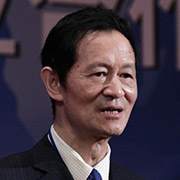The 7th China-US Strategic and Economic Dialogue (S&ED) was held in Washington D.C. on June 23-24, 2015. The background for this round S&ED is quite complex. On the one hand, the US government has increased its tone on criticizing China’s construction activities on some garrisoned islands and reefs of the Nansha Islands. The U.S. has also put more effort into surveillance and monitoring in this region. U.S. academia, think tanks and even officials have repeatedly pushed to resume a tough policy toward China. Some scholars even proposed the U.S. should promote regime change in China. Joseph A. Bosco, a former officer in the office of the secretary of Defense, wrote an article titled “America’s Asia Policy: The New Reality ” on the Diplomat website. He pointed out that “In the immediate term, regional and global security requires the United States to contain China’s expansionism. Long term, the interests of the Chinese people, as well as regional and global security, can only be served by American support for regime change in China.”[1] All of this has cast a shadow over the dialogue.
However, it was in such a special background that this round S&ED was extraordinarily compelling, and would have significant impacts on the Sino-US relations for the current and future. In terms of practical significance, it will help eliminate noise and barriers from both sides and also add new impetus to stabilize and promote bilateral relations. In a joint opening ceremony on June 24, Vice Premier Liu Yandong read out a message from President Xi to President Obama. It stressed that President Xi “believes that the new model of major-country relations featuring mutual benefits, win-win cooperation, and non-confrontation is the priority of China’s foreign policy.” [2] Previously, there were the rumors that China is adjusting its diplomatic strategy to weaken the importance of Sino-US relations and fostering China-Russia alliance against the United States. President Xi’s remarks strongly refute these false and ridiculous rumors.
At the same time, the United States also expressed its willingness to advance the development of bilateral relations. Vice President Joe Biden said in his speech on this occasion that “We do not fear China’s rise. We want to see China rise.” China’s peaceful development, he said, was conducive to the United States, Asia and the world: “This relationship is just too important. Not only do we depend on it, but the world depends on our mutual success.” [3]He also emphasized US-China cooperation in many fields had gained many important achievements. He admitted “there will be intense competition” between the two countries, but “that’s the nature of international relations.” The United States welcomed “fair and healthy competition” and hoped to work with China to deepen cooperation in various fields, properly handle differences and develop long-term and stable Sino-US relations and jointly cope with global challenges of the 21st century.
During the two-day meeting, 127 outcomes from the strategic track of the dialogue covered many fields such as building new type of major countries relations, deepening bilateral cooperation in non-proliferation, anti-corruption, law enforcement and other areas, jointly dealing with regional hot spots and global challenges and constructively managing and controlling the differences.[4] In the economic track, the two sides reached more than 70 important results, concerning the overall, long-term and strategic issues of the two countries and the international economy. It charts the course and strengthens the foundation as well as enhances the confidence for the further development of bilateral relations.
Symbolically speaking, the success of this S&ED round shows the resilience and also proves the maturity of China-US relations. It is first reflected in the equality of bilateral relations. In-depth development of relations between countries cannot do without mutual respect and equality. Back in history, for a very long period of time, the Sino-US relationship had been seriously asymmetry dependent, which is reflected not only in the strength gap between the two sides, but also in their identities cognition. During that time, the identity of the relationship between the US and China was like the relationship between teachers and students. In the past China-US exchanges, the United States often held a higher status, with a condescending attitude towards China. However, since the first S&ED launched in 2009, the equality in China-US relations has evolved more obviously, such as the dialogue being held alternately in the capitals, setting the theme and agenda in turns; elaborating the respective views while listening to the other’s demands during the meeting. All these show the equality of bilateral relations.
Maturity is also reflected in the consensus on seeking common ground while respecting the differences. That is, neither side intends to impose its will on the other. Seeking and safeguarding national interests is the fundamental principle and underlying dynamic for the nations’ foreign policy. However, there are often differences, even conflicts in national interests. How to deal with the conflicts of interests is an important benchmark to measure the maturity of bilateral relations. If the relations are not mature enough, it might lead to a more aggressive approach against each other and the result is likely to lead to confrontation, even war.
On the contrary, if the relations are mature enough, this will expand cooperation on the common interests on the basis of tolerance and compromise. That will maintain the overall stability of bilateral relations, as well as lay a solid foundation for fostering and enhancing mutual trust, which in turn provides an important and necessary condition for addressing the divergence of interests. It is conceivable that this will eventually lead to a virtuous cycle of bilateral relations towards a healthy, stable and sustainable direction. Therefore, the maturity of relations between the two countries does not mean both sides have highly consistent interests with each other, but the two sides can positively manage the divergent interests, and strengthen cooperation in the common interests. After heated discussions, even confronting debates, the 7th S&ED has still reached more than 190 actual results, which clearly illustrates the high degree of maturity of bilateral relations. The road is tortuous but the future is bright.
[1] Joseph A. Bosco, ” America’s Asia Policy: The New Reality ,” http://thediplomat.com/2015/06/americas-asia-policy-the-new-reality/
[2] “The U.S.-China Strategic & Economic Dialogue / Consultation on People-to-People Exchange,” http://www.state.gov/secretary/remarks/2015/06/244120.htm
[3] “The U.S.-China Strategic & Economic Dialogue / Consultation on People-to-People Exchange,” http://www.state.gov/secretary/remarks/2015/06/244120.htm
[4] “U.S.-China Strategic & Economic Dialogue Outcomes of the Strategic Track,” http://www.state.gov/r/pa/prs/ps/2015/06/244205.htm


